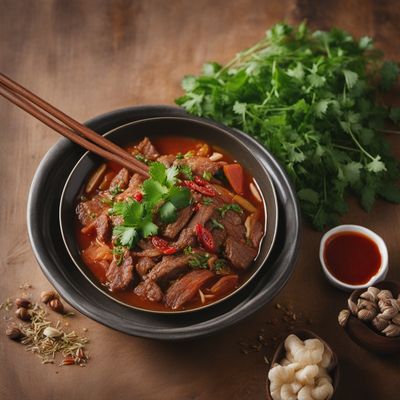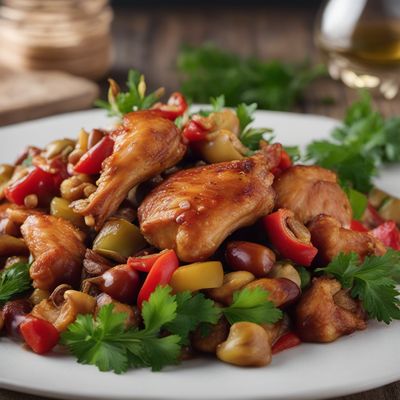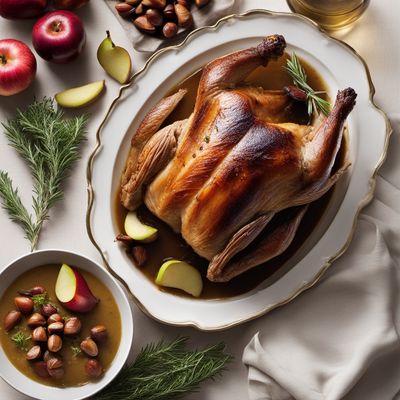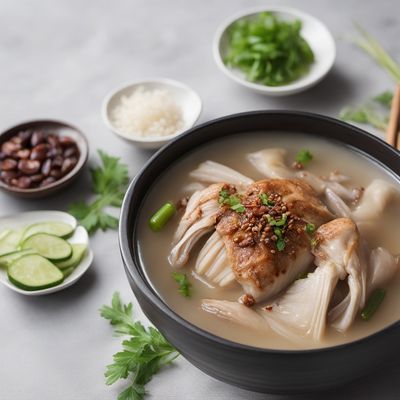
Ingredient
Chestnuts
The Nutty Delight
Chestnuts are characterized by their smooth and shiny brown shells, which encase a creamy white flesh. They have a slightly sweet and nutty flavor with a soft and starchy texture. Chestnuts are commonly used in both traditional and modern cuisines around the world, adding a unique taste and texture to dishes.
Origins and history
Chestnuts have a long history dating back thousands of years and are believed to have originated in Asia. They were a staple food in ancient times and were highly valued for their nutritional content. Chestnuts have cultural significance in many countries, including Italy, where they are a popular ingredient in holiday dishes. They are also commonly found in Asian cuisines, particularly in China, Japan, and Korea.
Nutritional information
Chestnuts are a good source of dietary fiber, vitamin C, and minerals such as potassium and magnesium. They are relatively low in calories and fat compared to other nuts.
Allergens
Chestnuts are not known to be allergenic, but individuals with tree nut allergies should exercise caution and consult with a healthcare professional before consuming them.
How to select
When selecting chestnuts, look for ones that are firm and heavy for their size. Avoid chestnuts with mold, soft spots, or holes in the shell. The shell should be shiny and free from cracks. Fresh chestnuts should have a vibrant brown color and should not rattle when shaken.
Storage recommendations
To store fresh chestnuts, keep them in a cool and dry place, preferably in the refrigerator. They can be stored in a perforated plastic bag or a container with ventilation to prevent moisture buildup. Chestnuts can also be frozen for long-term storage.
How to produce
Chestnuts can be grown by planting chestnut trees in suitable climates. They require well-drained soil and full sun exposure. It takes several years for chestnut trees to start producing nuts, but once established, they can yield a bountiful harvest.
Preparation tips
Before using chestnuts, they need to be roasted, boiled, or steamed to soften the flesh and remove the inner skin. Roasting chestnuts over an open flame or in the oven brings out their natural sweetness and enhances their flavor. They can be enjoyed on their own as a snack, used in stuffings, soups, stews, or pureed into a creamy chestnut soup. Chestnuts can also be ground into flour and used in baking recipes.
Substitutions
Hazelnuts can be used as a substitute for chestnuts in certain recipes, as they have a similar nutty flavor and texture. However, the taste may differ slightly. Sweet potatoes or butternut squash can also be used as a substitute in some dishes, providing a similar starchy texture.
Culinary uses
Chestnuts are commonly used in both sweet and savory dishes. They are often roasted and enjoyed as a snack during the holiday season. Chestnuts can be used in stuffings for poultry, added to soups and stews for a rich and nutty flavor, or pureed into a creamy chestnut soup. They can also be used in desserts such as chestnut mousse, cakes, and pastries.
Availability
Chestnuts are commonly available in Europe, Asia, and North America. They are cultivated in countries such as Italy, France, China, Japan, and the United States.
More ingredients from this category
Recipes using Chestnuts

Creamy Chestnut Soup
Velvety Swiss Chestnut Delight

Corsican-style Bún bò Huế
Savory Corsican Beef Noodle Soup

Galician-Style Stir-Fried Chicken with Chestnuts
Chestnut Delight: Galician-Inspired Stir-Fried Chicken

Eritrean-style Chestnut Soup
Savory Delight: Eritrean-inspired Chestnut Soup

Stir-Fried Spring Chicken with Chestnuts
Chestnut Delight: A Flavorful Stir-Fry with Spring Chicken

Roast Goose with Apple and Chestnut Stuffing
Golden Roast Goose: A Festive Delight with a Twist

Minorcan-style Brussels Sprouts with Chestnuts
Savory Delights: Minorcan Brussels Sprouts with a Chestnut Twist

Andalusian-style Chestnuts
Savory Andalusian Chestnut Delight

Korean Ginseng Chicken Soup
Healing Harmony: Korean Ginseng Chicken Soup